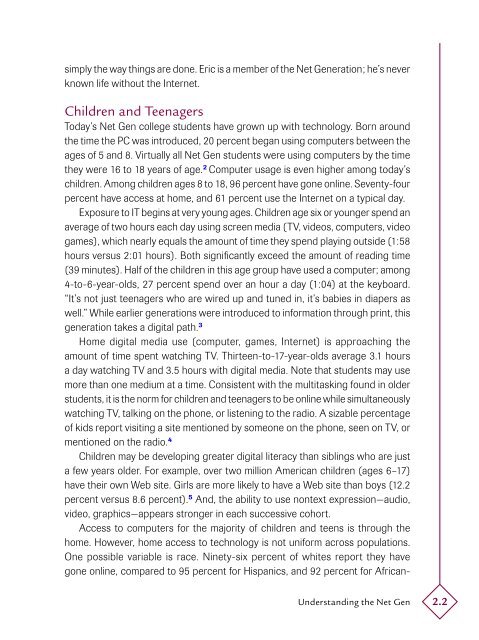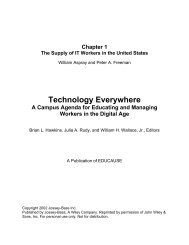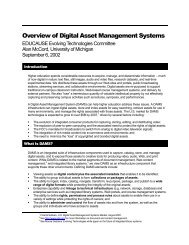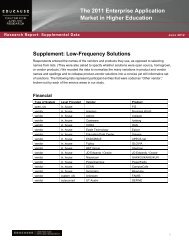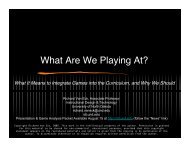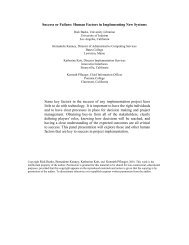Educating the Net Generation - Educause
Educating the Net Generation - Educause
Educating the Net Generation - Educause
Create successful ePaper yourself
Turn your PDF publications into a flip-book with our unique Google optimized e-Paper software.
simply <strong>the</strong> way things are done. Eric is a member of <strong>the</strong> <strong>Net</strong> <strong>Generation</strong>; he’s never<br />
known life without <strong>the</strong> Internet.<br />
Children and Teenagers<br />
Today’s <strong>Net</strong> Gen college students have grown up with technology. Born around<br />
<strong>the</strong> time <strong>the</strong> PC was introduced, 20 percent began using computers between <strong>the</strong><br />
ages of 5 and 8. Virtually all <strong>Net</strong> Gen students were using computers by <strong>the</strong> time<br />
<strong>the</strong>y were 16 to 18 years of age. 2 Computer usage is even higher among today’s<br />
children. Among children ages 8 to 18, 96 percent have gone online. Seventy-four<br />
percent have access at home, and 61 percent use <strong>the</strong> Internet on a typical day.<br />
Exposure to IT begins at very young ages. Children age six or younger spend an<br />
average of two hours each day using screen media (TV, videos, computers, video<br />
games), which nearly equals <strong>the</strong> amount of time <strong>the</strong>y spend playing outside (1:58<br />
hours versus 2:01 hours). Both significantly exceed <strong>the</strong> amount of reading time<br />
(39 minutes). Half of <strong>the</strong> children in this age group have used a computer; among<br />
4-to-6-year-olds, 27 percent spend over an hour a day (1:04) at <strong>the</strong> keyboard.<br />
“It’s not just teenagers who are wired up and tuned in, it’s babies in diapers as<br />
well.” While earlier generations were introduced to information through print, this<br />
generation takes a digital path. 3<br />
Home digital media use (computer, games, Internet) is approaching <strong>the</strong><br />
amount of time spent watching TV. Thirteen-to-17-year-olds average 3.1 hours<br />
a day watching TV and 3.5 hours with digital media. Note that students may use<br />
more than one medium at a time. Consistent with <strong>the</strong> multitasking found in older<br />
students, it is <strong>the</strong> norm for children and teenagers to be online while simultaneously<br />
watching TV, talking on <strong>the</strong> phone, or listening to <strong>the</strong> radio. A sizable percentage<br />
of kids report visiting a site mentioned by someone on <strong>the</strong> phone, seen on TV, or<br />
mentioned on <strong>the</strong> radio. 4<br />
Children may be developing greater digital literacy than siblings who are just<br />
a few years older. For example, over two million American children (ages 6–17)<br />
have <strong>the</strong>ir own Web site. Girls are more likely to have a Web site than boys (12.2<br />
percent versus 8.6 percent). 5 And, <strong>the</strong> ability to use nontext expression—audio,<br />
video, graphics—appears stronger in each successive cohort.<br />
Access to computers for <strong>the</strong> majority of children and teens is through <strong>the</strong><br />
home. However, home access to technology is not uniform across populations.<br />
One possible variable is race. Ninety-six percent of whites report <strong>the</strong>y have<br />
gone online, compared to 95 percent for Hispanics, and 92 percent for African-<br />
Understanding <strong>the</strong> <strong>Net</strong> Gen<br />
2.2


